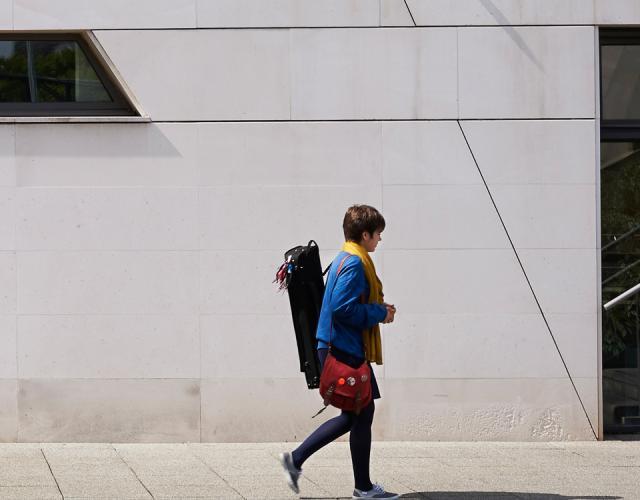
Orchestration - Hors Cycle
Information
-
Name
Orchestration
-
Cycle
Out of Cycle
-
Course's number of years
2 years
-
Delivered diploma
Orchestration awards
-
Course objectives and content
The aim of this second subject is to study orchestration in all its forms (two-piece orchestra and three-piece orchestra). The composers studied are drawn from the repertoire of the late 19th and 20th centuries.
Students have weekly group and individual lessons, as well as 'laboratory' sessions. During the latter, they carry out various tasks under the supervision of their teacher.Mandatory laboratory training:
1st year: 3-piece orchestra (maximum 62 musicians)
2nd year: 2-piece orchestra (39 musicians maximum)
3 flutes (the2nd taking the piccolo and the3rd flute in G)
3 oboes (including 1 English horn)
3 clarinets (the2nd taking the small clarinet and the3rd the bass clarinet)
3 bassoons (including 1 contrabassoon)
4 horns
3 trumpets
3 trombones (2 tenors and 1 bass)
1 tuba
3 percussionists* including 1 timpanist
1 harp
1 piano and/or celesta (1 player)
string quintet (10/8/6/6/4)
2 flutes (the2nd taking the piccolo)
2 oboes (including 1 English horn)
3 clarinets (the2nd taking the small and the3rd the bass)
2 bassoons (the2nd taking the contrabassoon)
2 horns
2 trumpets
1 trombone
2 percussionists* including 1 timpanist
1 harp
1 piano and/or celesta (1 player)
string quintet (6/5/4/4/2)
* For percussion instruments, students are asked to contact the instrument managers to check availability (level -2, office 2s 32).
Examination for the Orchestration Prize :
The final examination consists of two parts: homework and a performance in the orchestra box:
- Homework to be completed within 6 weeks: orchestration of a compulsory work. Compulsory formation: 3-piece orchestra (62 musicians)
- 17-hour practice session with piano: orchestration of a work for keyboard. Compulsory formation: 2-piece orchestra (39 musicians maximum).
The work from these two rounds will be performed live before the jury at the end of the school year. The jury may examine the work of the laboratories.
-
Number of complementary disciplines to validate
0
